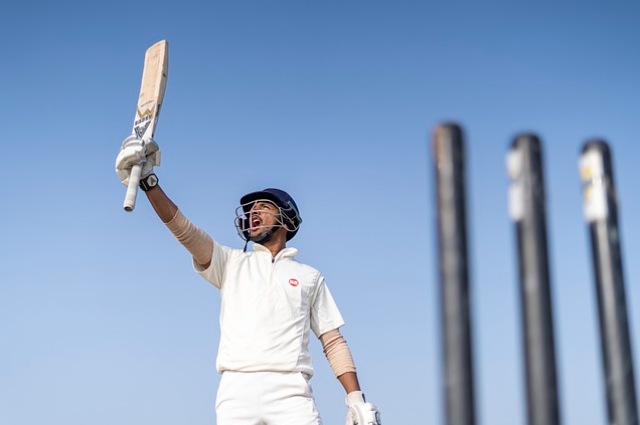
Cricket is not just a sport in India; it is a way of life. In popularity, it surpasses traditional sports like hockey and football. For millions of Indians, cricket is a daily source of joy, pride, and entertainment. Whether it's a local gully match or an international tournament, cricket unites people from all backgrounds.
Cultural Importance
Cricket is a social event where friends and families come together.
It brings pride and unity during international matches.
It transcends religion, region, and caste.
Rising Popularity Over the Years
Cricket's popularity exploded in the 1980s and 90s with the rise of television.
BCCI became one of the richest sports boards.
In 2023, cricket contributed more than 80% of the ICC's global revenue.
Politics and Cricket: A Strong Connection
From Colonial Times to Now
Politics has always had a say in how cricket is played and managed in India. It started with the British using cricket as a soft tool of governance. Over time, cricket began reflecting India’s struggles with caste, class, and region.
Cricket as a Mirror of Society
Cricket has showcased India’s fight against colonialism.
It has shown unity in diversity.
Regionalism, caste, and nationalism all influence how cricket is run.
Section 1: The Beginnings of Indian Cricket
Cricket in Colonial India
Introduced by the British during colonial rule.
First adopted by the elite Indians and Parsi community in Bombay.
Rise of Early Cricket Clubs
Parsi, Hindu, and Muslim cricket clubs emerged.
These clubs reflected India’s complex social fabric.
The 1932 India-England Test Match
India played its first Test match at Lord’s in 1932.
It marked India’s entry into world cricket.
Symbolized India’s fight for self-respect during colonial rule.
Royal Patronage in Cricket
Indian kings like the Maharaja of Patiala supported cricket.
Royals formed their teams and hosted matches.
Key Figures in Pre-Independence Cricket
Lala Amarnath: First Indian to score a Test century.
Vijay Hazare: Played a major role in early Indian cricket.
Cricket and Nationalism
Matches became symbols of Indian excellence.
Cricket inspired youth during the freedom struggle.
The 1952 West Indies Series Win
India’s first major win.
Gave the country a sense of pride and confidence post-independence.
Section 2: The Role of Politics in Cricket
Cricket as a National Symbol
World Cup Wins
The 1983 win against the West Indies boosted national morale.
The 2007 T20 win introduced a new cricket-loving generation.
Political Leaders and Cricket
Indira Gandhi supported cricket as a national sport.
Rajiv Gandhi modernized the cricket infrastructure.
Atal Bihari Vajpayee used cricket for diplomacy.
Cricket Diplomacy
India-Pakistan matches used for peace talks.
Political leaders attend matches to ease tensions.
Selection Controversies
Regionalism plays a big role.
Players from North or West often get preference.
Anil Kumble, a top performer, was ignored due to southern bias.
1990s Liberalization and Corporate Entry
Big brands started sponsoring teams.
TV rights became a gold mine.
Politicians and businessmen formed strong cricket lobbies.
Section 3: The Board of Control for Cricket in India (BCCI)
Formation of BCCI
Formed in 1928 to govern Indian cricket.
Took control from colonial powers slowly.
Growth and Power
Today, the BCCI is the richest cricket board.
Controls global decisions through the ICC.
Political Influence in BCCI
N. Srinivasan and Lalit Modi had strong political ties.
Leaders like Arun Jaitley and Sharad Pawar served in BCCI roles.
Cronyism and Internal Politics
The selection of officials is often based on party links.
Regional favoritism and nepotism are common.
Scandals in BCCI
2000 Match-fixing rocked Indian cricket.
IPL 2013 betting scam revealed deep political ties.
The Supreme Court had to intervene.
Modi Era and Political Control
The Narendra Modi era brought stricter governance.
Arun Jaitley had a deep influence on team selection and administration.
Section 4: The Indian Premier League (IPL)
Birth of IPL in 2008
Created by Lalit Modi.
Mixed Bollywood, business, and cricket.
Became an instant success.
Politics and Business Behind IPL
State governments own teams (e.g., Tamil Nadu and Rajasthan).
Corporations aligned with political parties run franchises.
IPL Controversies
2013 Spot-fixing: Involved CSK and Rajasthan Royals.
Politicians and team owners were accused.
IPL and Global Cricket
Changed the global cricket calendar.
Players now prefer IPL over international duties.
Other countries launched their leagues.
Section 5: Players and Politics
Cricketers Turn Politicians
Sachin Tendulkar: Rajya Sabha member.
Navjot Singh Sidhu: Became Punjab minister.
Chetan Chauhan: BJP politician.
Player Power in Team Politics
Ganguly vs. selectors: Classic example of a captain's influence.
Dhoni and Kohli also had a say in selection decisions.
Controversial Player Exits
Kumble was removed as coach despite good results.
Often influenced by player-lobby or political pressure.
Section 6: Evolution of Indian Cricket Politics
From Region to Corporates
Early politics were based on region (Bombay vs South).
Now, more about corporate control and branding.
Media and Social Media Influence
Cricketers now have huge fan bases.
Can influence public opinion via Twitter, Instagram.
Virat Kohli and Rohit Sharma openly share views.
Rise of Modern Player Leaders
Players now have personal brands.
Tend to clash with board policies.
Push for better pay, fitness culture, and transparency.
Conclusion
The Intersection of Politics and Cricket
Cricket in India is shaped by politics, business, and fame.
Despite these challenges, cricket remains India’s most loved sport.
The Future of Indian Cricket
With continued political interest, the sport will remain powerful.
However, reforms are needed in the BCCI for transparency.
Cricket should serve the nation, not just political or business interests.
Final Thoughts
Cricket is India's heartbeat. But the game needs protection from too much interference. With good governance, cricket can unite India further and continue inspiring generations to come.
